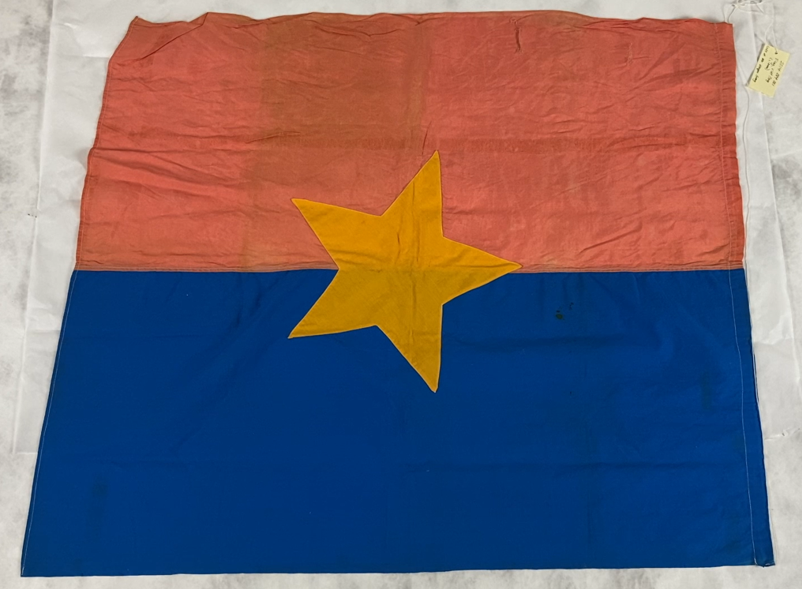 Nothing captures the attention of a s
Nothing captures the attention of a s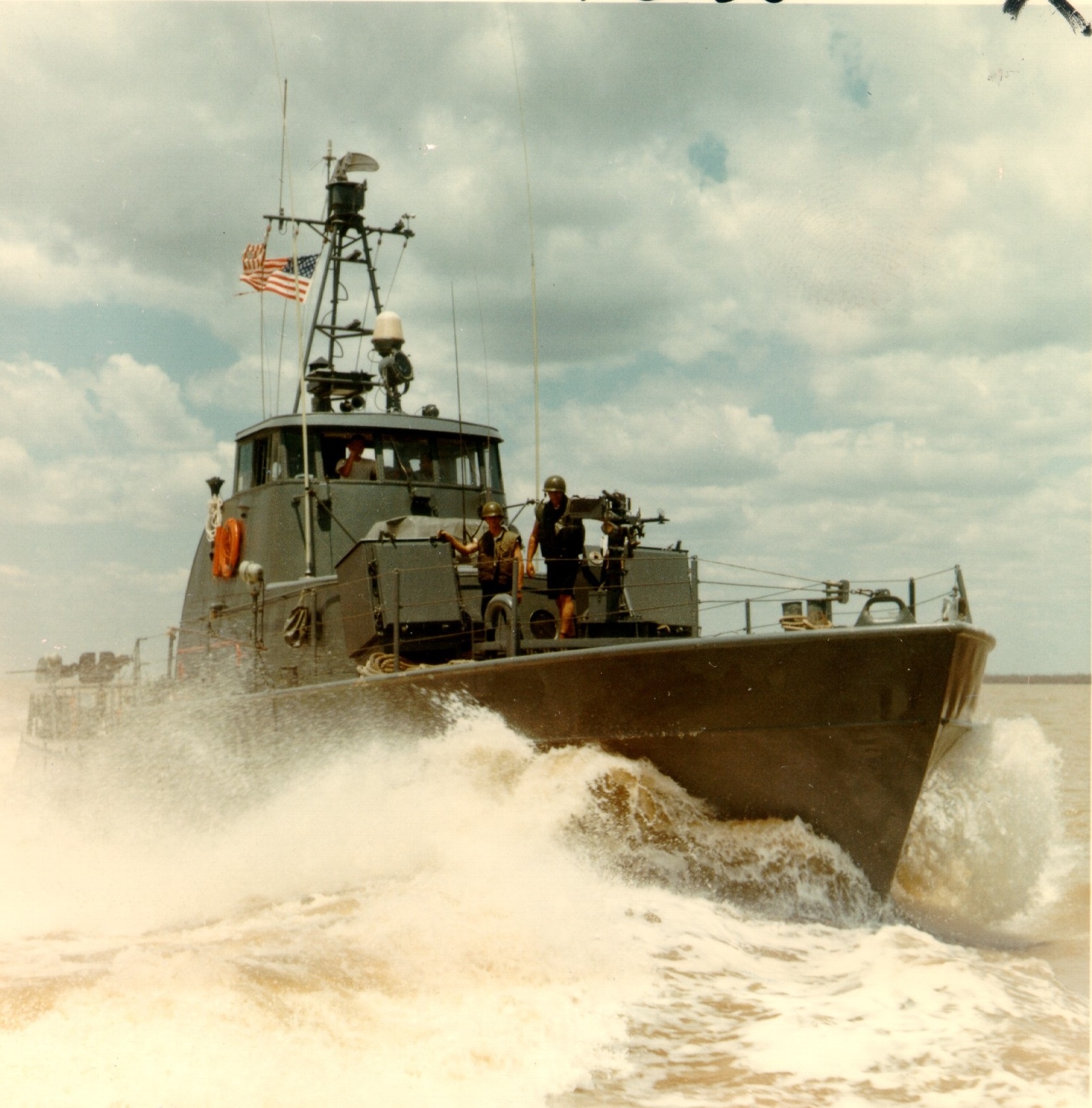 ervicemember better than stories of courage in battle as told by those who witnessed it. However, when the veterans of a conflict are no longer with us to describe those events, few artifacts engender these stories better than an enemy’s flag captured in wartime.
ervicemember better than stories of courage in battle as told by those who witnessed it. However, when the veterans of a conflict are no longer with us to describe those events, few artifacts engender these stories better than an enemy’s flag captured in wartime.
Among various flags in the Coast Guard’s Heritage Asset Collection is a flag seized during the Vietnam War. In this instance, it is a Vietcong flag, also known as the National Liberation Front of South Vietnam. Born in conflict, the flag was adopted in 1960 and is now defunct.
Little is known about the origins of this particular flag. A Coast Guardsman aboard the Point-Class Cutter Point Jefferson (WPB 82306) collected it during the war. The cutter was part of the class sent to South Vietnam and in 1966 was assigned to Division 13 of Squadron One. The cutter supported Operation Market Time, the effort to interdict Vietnamese junk boats and sampans and stem the flow of illegal weapons and ammunition smuggled to the south to the Vietcong. The flag was reportedly taken in 1968 from an interdicted Vietnamese junk boat searched near the Mekong Delta.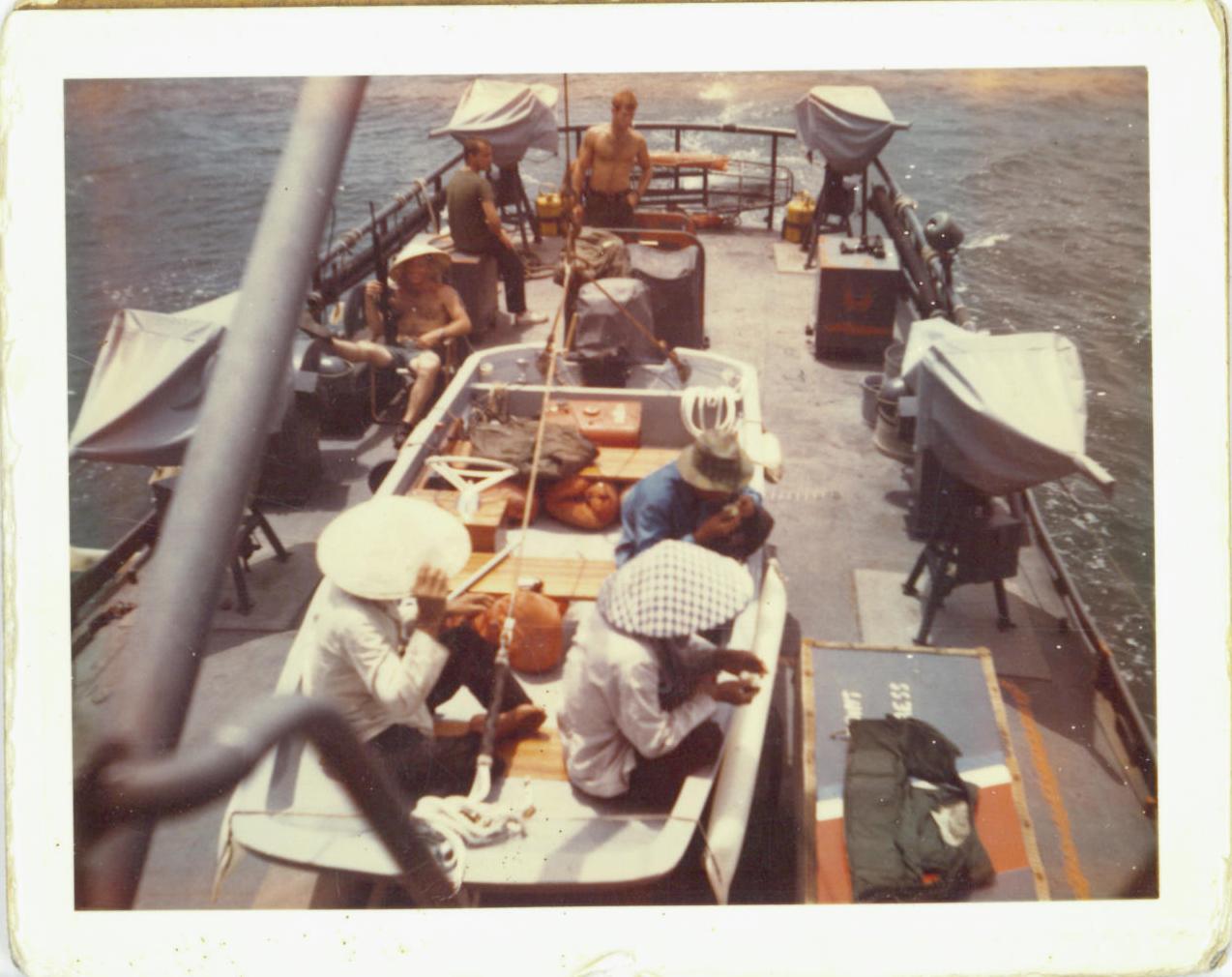
The flag’s half-red, half-blue field is believed to be a variation on the flag of Communist North Vietnam. The blue bottom half of a Vietcong flag represented the North’s control over the capitalist south. As with the red top half, the blue comes in multiple sh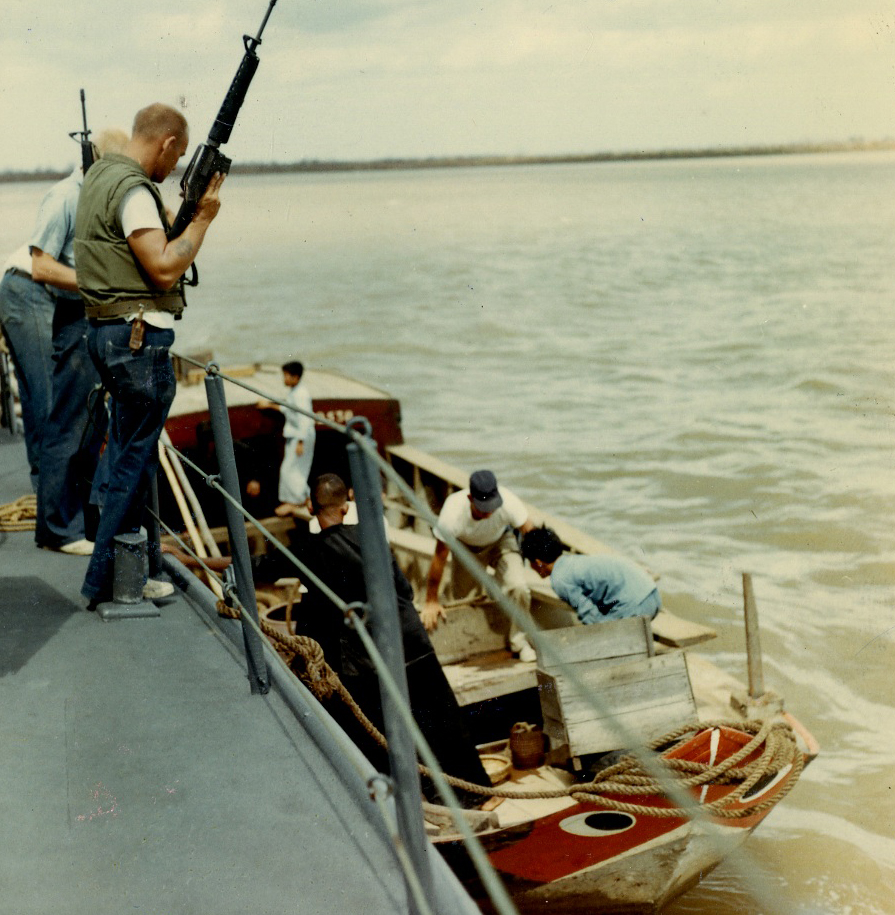 ades ranging from very dark to sky or baby blue. Some examples had white or even green bottom halves. The edges of the five-pointed star are most often rendered with straight lines, with others having somewhat “bulging” arms. The star in the center was usually yellow, but could also be white.
ades ranging from very dark to sky or baby blue. Some examples had white or even green bottom halves. The edges of the five-pointed star are most often rendered with straight lines, with others having somewhat “bulging” arms. The star in the center was usually yellow, but could also be white.
Most Vietcong flags appear to be constructed with the more common “point up” orientation of the centered star. This example is a variant with the star oriented with one point aimed toward the hoist, a less common orientation. Further, the star is only visible on one side. There was no attempt to make the flag double-sided by cutting the fabric away on the reverse or by placing another star on the reverse side.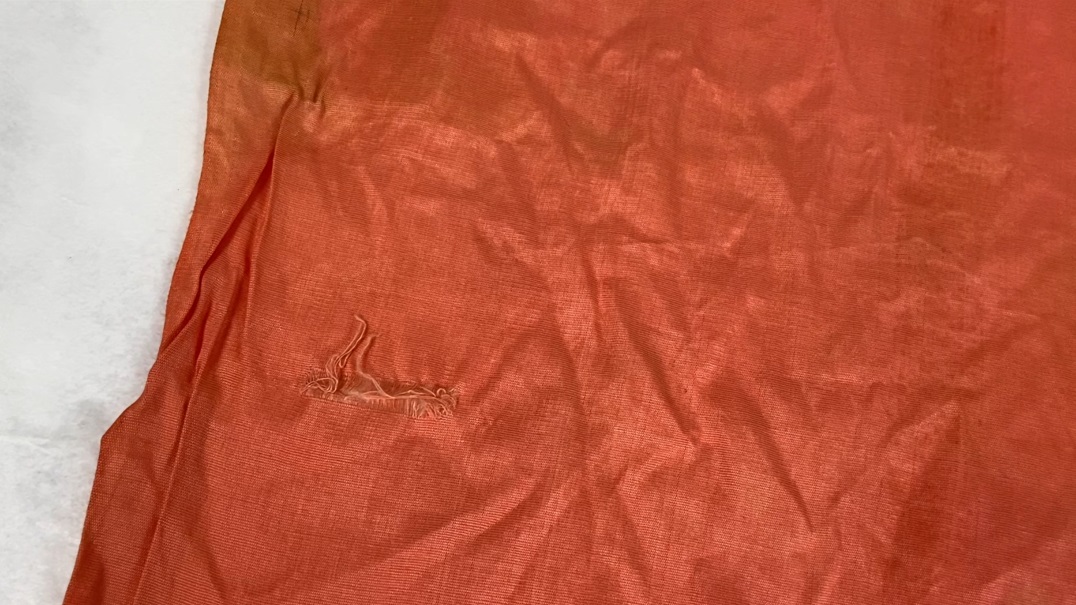
The flag measures 31 inches by 35 inches. It is machine sewn from lightweight cotton cloth and white stitching, with its red top half somewhat faded to an odd light orange shade or pinkish hue. The top half is straight stitch sewn to its blue bottom half and the yellow star is appliqued in the middle of the combined field. The field has been folded over to form a very narrow sleeve at the hoist, which allows it to be mounted to a narrow staff or hung from a line. Some experts believe this may be a banner designed to hang vertically in place of the traditional manner.
Being machine stitched rather than hand-sewn, it was likely not fabricated in the field nor hastily made by a member of a unit for an immediate need. There was little central control over the wartime production of these flags, so there is wide variation in all aspects of its manufacture. This explains the shades of color of all its constituent parts. This includes the thickness and types of cloth used, and the types and orientation of the star along with its mode of attachment.
This Vietcong flag was donated to the Coast Guard’s Heritage Asset Collection in 2014. It was featured at the North American Vexillological Association’s 55th Annual Meeting as part of a virtual tour of the U.S. Coast Guard Historian Office’s Exhibit Center.
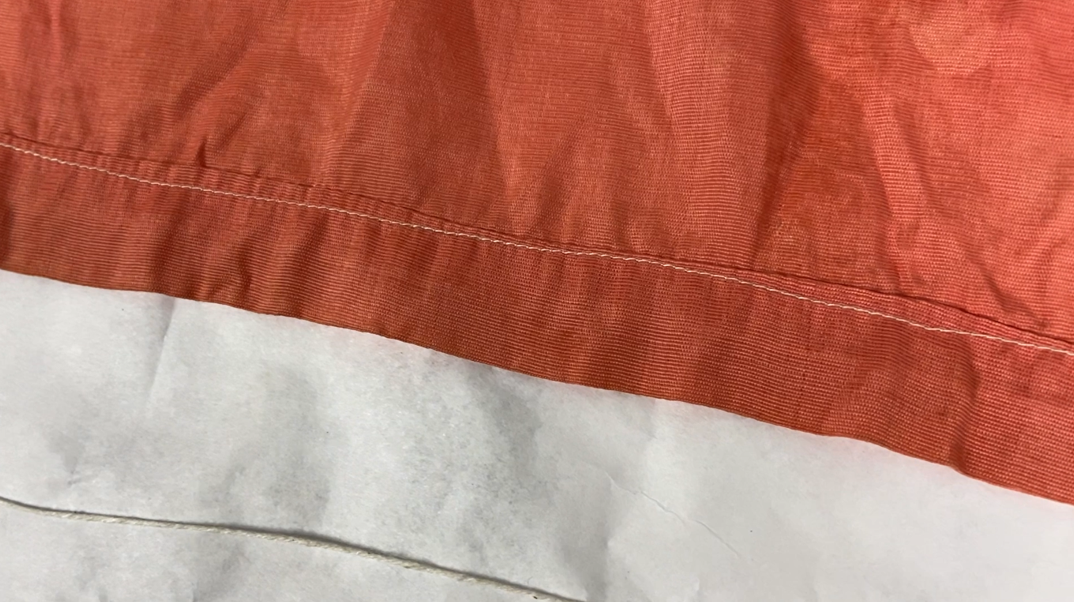 |
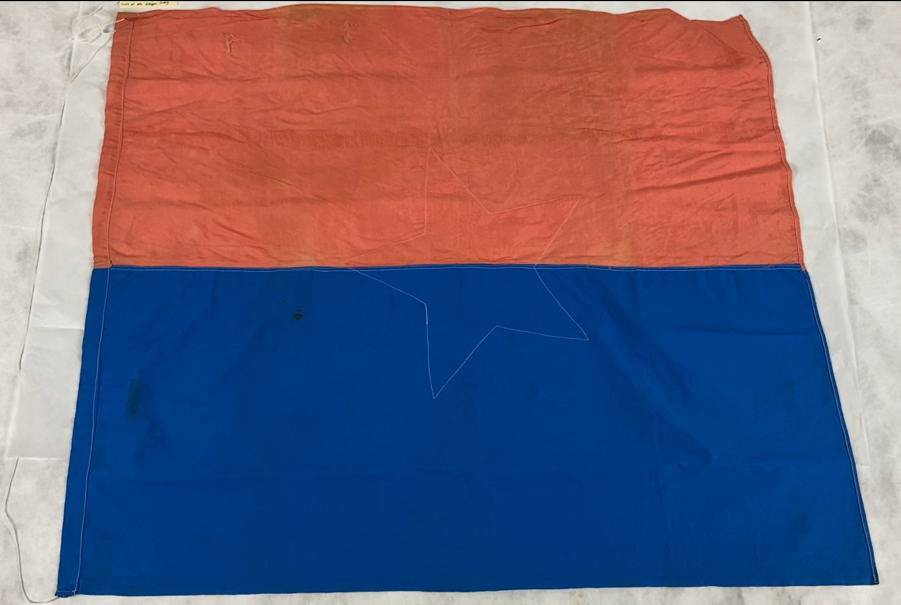 |
| The Vietcong flag’s (U.S. Coast Guard Heritage Asset Collection # 2014.084.001) narrow sleeve indicating use with a line or slender staff. (Courtesy of the author) |
Reverse side of the Vietcong flag (U.S. Coast Guard Heritage Asset Collection # 2014.084.001) with no star. (Courtesy of the author) |